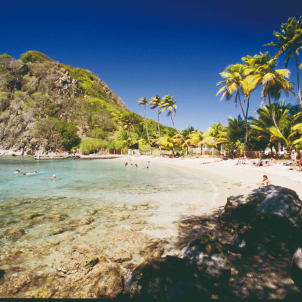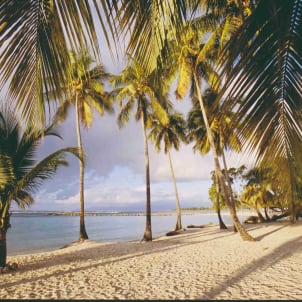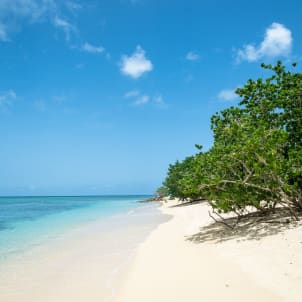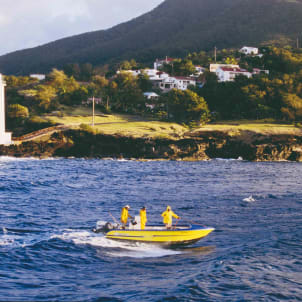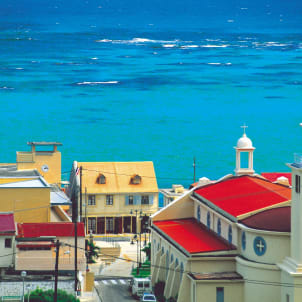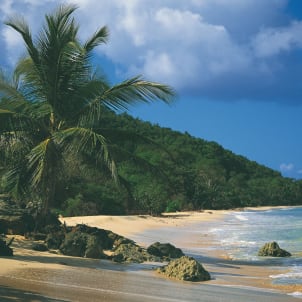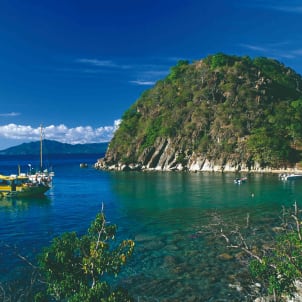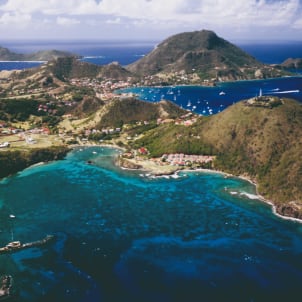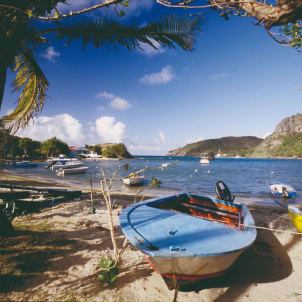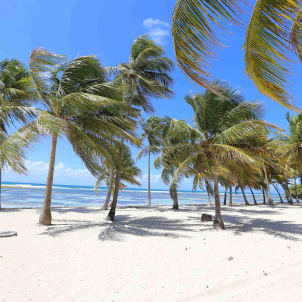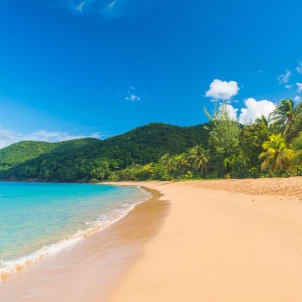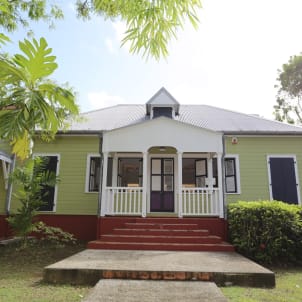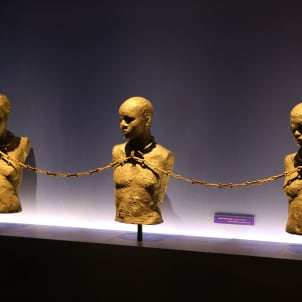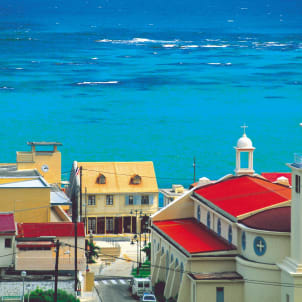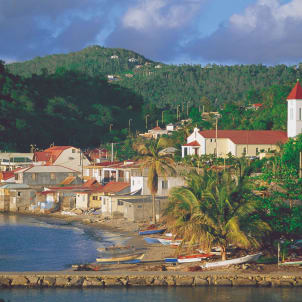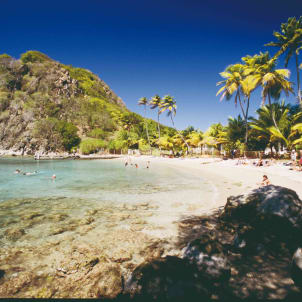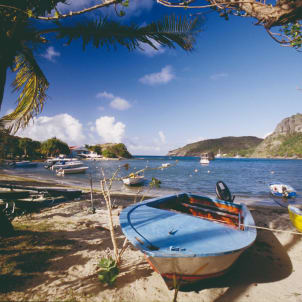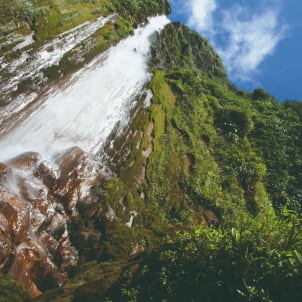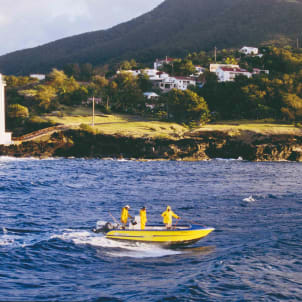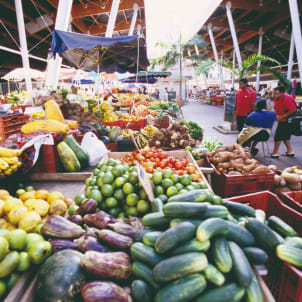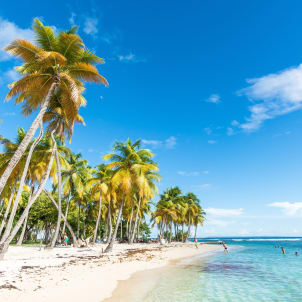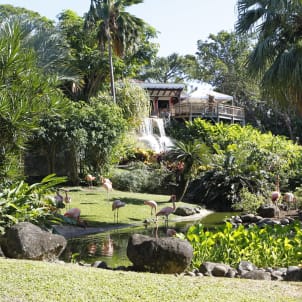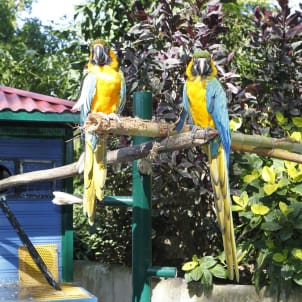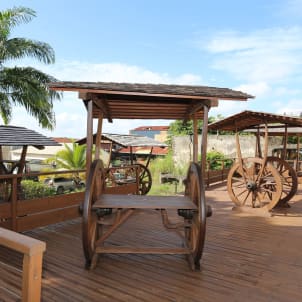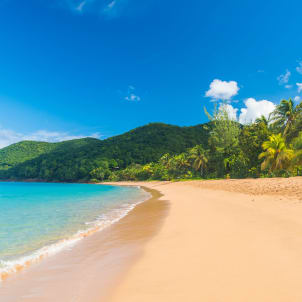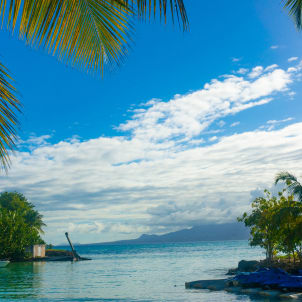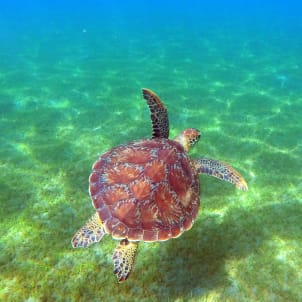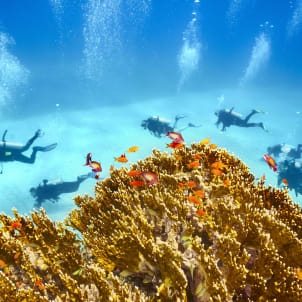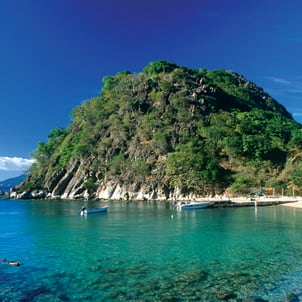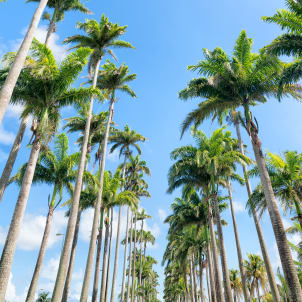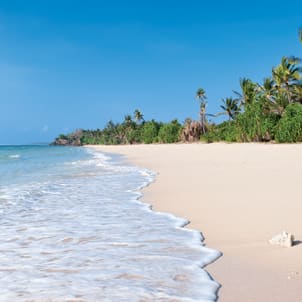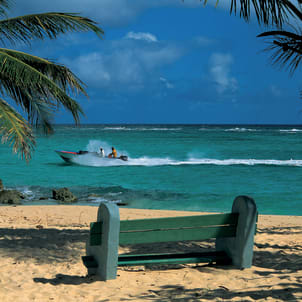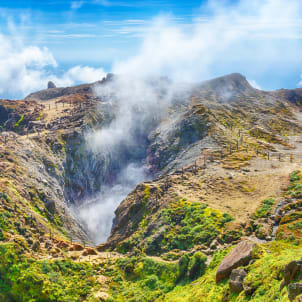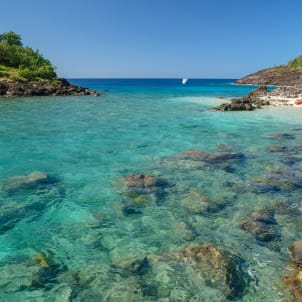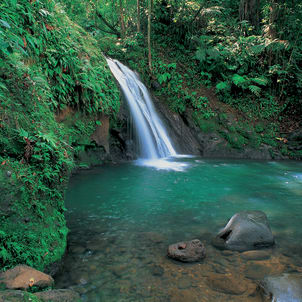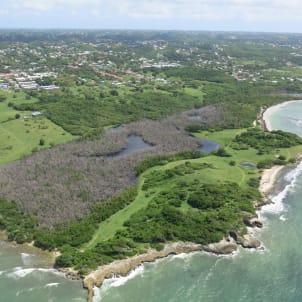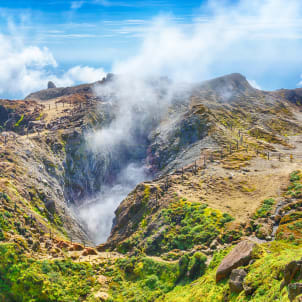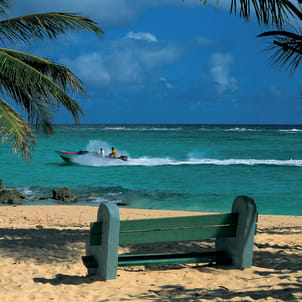Explore the paradise island of Guadeloupe
4.8/5200 reviews
Guadeloupe, a Caribbean jewel to discover.
Tropical escape between dream beaches and Creole culture.
Must-see locations
Guadeloupe: Beaches, Nature and Creole Culture to Explore
A French overseas territory, Guadeloupe is an archipelago in the Antilles located south of the Caribbean Sea. Its two largest islands, Basse-Terre and Grande-Terre, separated by the Rivière Salée, each resemble a butterfly wing, hence the archipelago's nickname. The rolling island of Grande-Terre unfolds long beaches and vast sugar cane fields from which rum is produced. On the island of Basse-Terre, nature lovers enjoy visiting the Guadeloupe National Park with its Carbet Falls and the Grande Soufrière volcano. Added to these are the small islands including Marie-Galante, La Désirade, and Les Saintes. Guadeloupe thus invites beach pleasures, discovery of terrestrial and maritime natural wealth such as the Cousteau Reserve, but also a traditional culture rich in colors. For the history of Guadeloupe, its folklore, and its delicious cuisine, consult your Guadeloupe guide.
Tropical Escape and Hidden Treasures
An island both distant and close
Both a region and overseas department of France (971), Guadeloupe shares with the mainland the same currency, language, and level of healthcare and social services. However, the sense of being in a different place is very much present when you arrive on the island for the first time, far beyond just the difference in temperature. The dual Franco-Caribbean identity has created a blend of faces, cultures, mentalities, and a way of life that is different from that of mainland France.
A Safe Destination for Your Vacation
You won't have any scares with animals here: no sharks along the coast, nor any giant snakes or spiders. Of course, centipedes, those millipedes with painful bites, should be avoided. At sea, be cautious because the lionfish, also known as the flying scorpion fish, equipped with venomous spines, has unfortunately been present in the Caribbean for a few years now. Its venom remains active even after its death.
In terms of healthcare, you benefit from the French healthcare system. Remember to bring your health insurance card. Some vigilance guidelines should be followed if you need to travel through certain poor neighborhoods, to protect yourself against leptospirosis: avoid walking barefoot. Finally, regarding safety, some neighborhoods are best avoided at nightfall, just like everywhere in the world.
Antilles: Protecting Yourself from Mosquitoes
With an average temperature of 27°C, peaks of 32°C in June, July, and August, and the absence of distinct seasons, the tropical nature is generous with temperatures. A mercury reading below 20°C is quite an event here, a perfect topic for the local newspaper's front page. It is said that there are two annual tourist seasons: the high season, from November to April, and the low season, from May to October. But it's a sunny destination all year round, especially when it's cold in Europe! Certainly, there is the hurricane season (from June to the end of November), during which strong depressions and sometimes memorable cyclones can deter travelers. These phenomena are constantly monitored and anticipated.
An effective security system is implemented by the communities. From mid-December to mid-June, the weather becomes drier. Vacation prices drop at the end of April, after Easter. For the summer holidays (June to August), temperatures and humidity are higher, but a family stay is easily conceivable. It's also the ideal time to enjoy a cruise because the sea is calmer unless there is a storm warning. Be aware that in July and August, plane ticket and accommodation prices increase as many Antilleans living in mainland France return "home" during this period.
Sun, beaches, and relaxation
Before leaving, if you are promised sunshine all year round, beautiful fine sandy beaches, and a warm turquoise sea, don't think these are exaggerated claims. Guadeloupe truly has all these attractions. The climate is pleasant year-round, even though there can be heavy rains outside the dry season. You can choose between white, golden, or intense gray sand on a volcanic beach.
You can easily "take it easy" in Sainte-Anne, Saint-François, or Gosier in Grande-Terre, or prefer aqua-hiking in the rivers, camping in the tropical forest, climbing the volcano, or big-game fishing in Basse-Terre. The archipelago combines exoticism and modernism, comfort and nature, relaxation and invigorating outdoor activities, not to mention thrilling sea experiences or numerous water activities.
Outdoor Activities to Discover
With its lush nature surrounded by a preserved coastline, the archipelago is a fantastic playground. Swimming, water sports, sea adventures: activities revolve around the seaside. Never tried scuba diving? Now is the time! The richness of the seabed invites you to discover the Big Blue. The transparency of the water is reassuring, as are the certified instructors. Diving with mask and snorkel, tanks, or free diving, especially in Bouillante. You can rent boats, sail, or go on a cruise around the archipelago. Sporty types will enjoy big game fishing, windsurfing, surfing, kitesurfing, or kayaking. Those who prefer a more meditative experience can opt for a hammock or the sand.
Aerial recreational activities (flyovers in a plane, paragliding, helicopter) offer an original way to discover the archipelago from another angle. Inland, hikes turn into trekking or canyoning, buggy or 4x4 rides. On foot, people seek out waterfalls where baths reward a good walk. Botanical trails offer other sensations and amaze with the abundance of tropical species. Also to be discovered: traditional agriculture with sugar cane and banana plantations. An Ecomuseum and Heritage itinerary crosses rum distilleries and colonial houses.
The towns of Basse-Terre and Pointe-à-Pitre offer fascinating themed guided tours.
Ecotourism on the Rise
The main economic sector in Guadeloupe, the tourism industry has been characterized over the years by a genuine quest for balance and a greater diversity of accommodation and activity offerings. Beyond the economy generated by seaside resorts located mainly on Grande-Terre, alternative accommodation options have emerged in recent decades and have significantly developed; ecotourism is now booming. Establishments are focusing on sustainable development, turning to solar energy, water resource preservation, and eco-friendly constructions. This diversification of offerings is beneficial for the islands of the archipelago, both for entrepreneurs investing in the green economy and for travelers seeking more rural and authentic stays, as well as for the local population to whom this activity provides employment.
Savoir-fête made in Guadeloupe
We are well acquainted with the trilogy of sun, rum, and coconut trees! Clichés or basic ingredients for a party? During your walks and excursions, you will certainly notice this pleasant aspect of the Guadeloupean character. The love of partying is not just a phrase here. There is always an occasion to have fun, play music, and show off some dance moves. To prove it, in addition to the eleven public holidays recognized in the mainland, Guadeloupe adds nine more days off (Monday and Tuesday of Carnival, Ash Wednesday, Mid-Lent Thursday, Good Friday, Holy Saturday, May 27th, July 21st, November 2nd). The calendar of patronal feasts is also impressive. Added to it are the Carnival period, festivals, open-air zouks... Obviously, the ti-punch (a true stress-relief remedy) helps maintain the atmosphere.
A website by
Customize your trips with Quotatrip and receive tailor-made offers directly in your inbox.
Discover a country
